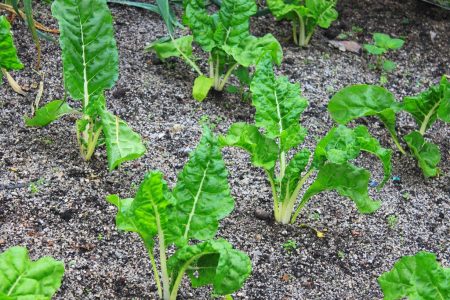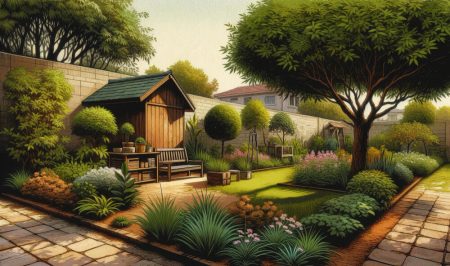
Landscaping can completely transform the look and feel of your outdoor space, turning it into a beautiful, functional, and enjoyable area. Whether you have a small backyard or a sprawling garden, thoughtful landscaping can enhance your property’s curb appeal and provide a personal oasis for relaxation and entertainment. In this article, we will delve into various landscaping ideas and tips to help you create a stunning outdoor environment that reflects your style and meets your needs.
Understanding the Basics of Landscaping
Before diving into specific landscaping ideas, it’s essential to understand the basics. Landscaping involves the planning, designing, and managing of outdoor spaces. It combines elements of architecture, gardening, and environmental science to create aesthetically pleasing and functional areas. Key components of landscaping include:
- Softscape: This involves all the living elements in your landscape, such as plants, trees, flowers, and shrubs.
- Hardscape: These are the non-living elements, including patios, walkways, rocks, and water features.
- Xeriscaping: This is a landscaping method that reduces the need for irrigation by using drought-resistant plants and efficient watering systems.
- Sustainable Landscaping: This focuses on environmentally friendly practices, such as using native plants, reducing water usage, and minimizing chemical inputs.
Creating a Landscaping Plan
A well-thought-out plan is crucial for successful landscaping. Start by evaluating your space and identifying your needs and preferences. Consider the following steps:
- Assess Your Yard: Look at the size, shape, and existing features of your yard. Take note of the soil type, sun exposure, and drainage patterns.
- Set Goals: Determine what you want to achieve with your landscaping project. Are you looking to create a space for entertaining, a peaceful retreat, a playground for kids, or a garden for growing vegetables?
- Budget: Establish a budget for your project. Landscaping can be expensive, so it’s essential to prioritize your needs and plan accordingly.
- Draw a Sketch: Create a rough sketch of your yard, including existing features and planned additions. This can help you visualize the final design and make necessary adjustments.
- Choose a Style: Select a landscaping style that complements your home and personal taste. Popular styles include modern, rustic, tropical, and cottage garden.
Essential Landscaping Elements
Incorporating a mix of softscape and hardscape elements can create a balanced and attractive landscape. Here are some essential elements to consider:
1. Plants and Trees
Plants and trees are the backbone of any landscape. They add color, texture, and life to your outdoor space. When selecting plants, consider factors such as climate, soil type, and maintenance requirements. Native plants are often a good choice as they are adapted to local conditions and require less care. Here are some tips for choosing and arranging plants:
- Layering: Use a variety of plant heights and textures to create depth and interest. Place taller plants at the back and shorter ones in the front.
- Seasonal Interest: Choose plants that bloom at different times of the year to ensure year-round beauty.
- Focal Points: Use striking plants or trees as focal points to draw attention and create visual interest.
- Color Schemes: Select a color scheme that complements your home and creates a harmonious look. Monochromatic, analogous, and complementary are popular color schemes in landscaping.
2. Lawns
A well-maintained lawn can be the centerpiece of your landscape. Choose a grass variety that suits your climate and maintenance level. Regular mowing, watering, and fertilizing are essential for a healthy lawn. Consider using organic fertilizers and practicing eco-friendly lawn care to minimize environmental impact.
3. Paths and Walkways
Paths and walkways provide structure and guide visitors through your garden. They can be made from various materials, including gravel, stone, brick, or concrete. Choose materials that complement your home’s style and the overall design of your landscape. Consider adding edging to keep paths neat and defined.
4. Patios and Decks
Patios and decks extend your living space outdoors, providing areas for dining, lounging, and entertaining. When designing a patio or deck, consider the size, location, and materials. Ensure that it blends seamlessly with your home and landscape. Adding features like pergolas, awnings, or umbrellas can provide shade and enhance comfort.
5. Water Features
Water features, such as fountains, ponds, and waterfalls, add a soothing and tranquil element to your landscape. They attract wildlife, create a focal point, and provide a calming soundscape. When installing a water feature, consider the maintenance requirements and safety, especially if you have children or pets.
6. Outdoor Lighting
Outdoor lighting enhances the beauty and functionality of your landscape, allowing you to enjoy your outdoor space after dark. Use a combination of ambient, task, and accent lighting to highlight key features, improve safety, and create a warm and inviting atmosphere. Solar-powered lights are an eco-friendly option that can save on energy costs.
Low-Maintenance Landscaping Tips
For those with busy lifestyles, low-maintenance landscaping is a practical choice. Here are some tips to reduce the upkeep of your garden:
- Drought-Tolerant Plants: Choose plants that require less water and are resistant to pests and diseases.
- Mulching: Apply a layer of mulch around plants to retain moisture, suppress weeds, and improve soil health.
- Irrigation Systems: Install drip irrigation or soaker hoses to deliver water directly to the roots, reducing water wastage and time spent watering.
- Ground Covers: Use ground covers instead of grass in areas that are difficult to mow. They require less maintenance and can prevent erosion.
- Automatic Lighting: Use timers and motion sensors for your outdoor lighting to reduce the need for manual operation.
Sustainable Landscaping Practices
Sustainable landscaping practices help protect the environment and conserve resources. Here are some ways to make your landscaping more eco-friendly:
- Native Plants: Use native plants that are adapted to local conditions and support local wildlife.
- Rain Gardens: Create rain gardens to capture and filter runoff, reducing the impact on stormwater systems.
- Composting: Compost kitchen and garden waste to create nutrient-rich soil for your plants.
- Reduce Chemicals: Minimize the use of chemical fertilizers and pesticides. Opt for organic alternatives and integrated pest management practices.
- Water Conservation: Implement water-saving techniques, such as rain barrels, to collect and reuse rainwater.
Conclusion
Landscaping is a rewarding endeavor that can enhance the beauty, functionality, and value of your property. By understanding the basics, planning carefully, and incorporating a mix of essential elements, you can create an outdoor space that reflects your style and meets your needs. Whether you prefer a lush garden filled with colorful blooms or a sleek, modern design with minimal maintenance, the right landscaping can transform your outdoor space into a personal paradise. Embrace sustainable practices to ensure your landscape is not only beautiful but also environmentally friendly. With these tips and ideas, you’re well on your way to creating a stunning landscape that you can enjoy for years to come.



